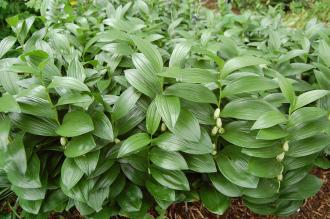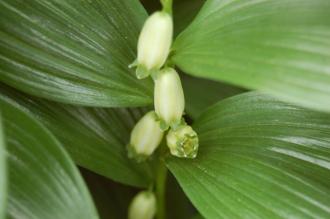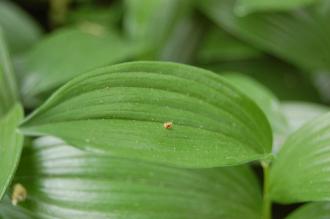
Polygonatum humile (23/05/2015, Kew Gardens, London)
Position: Partial shade to full shade
Soil: Moist, well drained
Flowering period: Late spring to early summer
Eventual Height: 50cm
Eventual Spread: 50cm
Hardiness: 4a, 4b, 5a, 5b, 6a, 6b, 7a, 7b, 8a, 8b, 9a
Family: Asparagaceae
Polygonatum humile is a deciduous herbaceous perennial with a creeping habit. Its mid/ dark green leaves are lanceolate to ovate with entire margins, up to 9cm long, 4cm broad and appear on upright stems. Its green/ white pendulous flowers are tubular, up to 1.5cm long and borne on the leaf axils. Its blue/ black fruit are up to 1cm across and spherical. Its roots are rhizomes which aids its slow spread.

Polygonatum humile Flower (23/05/2015, Kew Gardens, London)
Polygonatum humile, commonly known as Dwarf Solomon’s Seal, is native to north east China, Japan, Korea, and east Siberia. In its native habitat is grows on grassy slopes and in deciduous forests. It should noted this plant is poisonous.
The etymological root of the binomial name Polygonatum is derived from the Greek polys meaning ‘many’ and gonu meaning ‘a small joint’. Humile is derived from the Latin humilis meaning ‘lowest’ or ‘dwarf’.
The landscape architect may find Polygonatum humile useful as a perennial ground cover in shady locations. Its is suitable for use in woodland and rain garden planting schemes.

Polygonatum humile Leaf (23/05/2015, Kew Gardens, London)
Ecologically, Polygonatum humile flowers are attractive to pollinating insects such as bees that will feed on its nectar.
Polygonatum humile prefers moist, humus rich, well-drained soils. It tolerates most pH of soil. It will tolerate wet soils.
Polygonatum humile requires little maintenance. It can be cut to the ground in late autumn although the stems will disconnect themselves from the rhizomes after the first frost. Large clumps may be divided in autumn and spring.

Landscape Architecture

